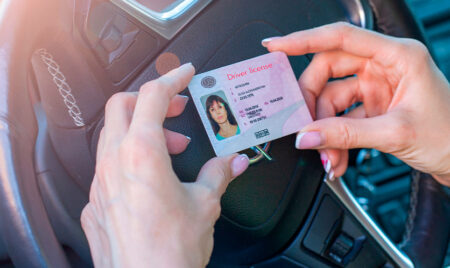Rio Grande Valley Driving Test: How to Prepare and Succeed
Getting your driver’s license in the Rio Grande Valley is a thrilling and empowering journey! But let’s be honest—it can also feel a bit nerve-wracking. Whether you’re a teen itching to hit the open road or an adult finally deciding to take the plunge, preparing for the Texas driving test is important. Luckily, with the right preparation and mindset, passing your driving test can be a smooth ride.
Let’s understand everything in this Rio Grande Valley driving test guide.
Getting Started: The Basics

Before you even think about getting behind the wheel, you’ll need to gather a few must-have documents. Make sure you have:
- Proof of U.S. citizenship or lawful presence
- Proof of Texas residency
- Your Social Security number
- Valid vehicle insurance and registration
These documents will be your ticket to taking the driving test, so double-check that everything’s in order. Without them, you’ll be turned away before you even start!
It is also important to verify that your vehicle is in tip-top shape. That means lights, brakes, and all other systems should be fully functional and meet Texas safety standards. You don’t want to fail before you even get out of the parking lot.
Mastering the Test Route: Know Before You Go
The driving test isn’t just about knowing how to operate a vehicle. It’s about navigating real-world driving scenarios in a way that’s safe and efficient. One of the best ways to prepare is by practicing on the actual routes used for the test. Familiarize yourself with the roads, turns, stop signs, and even the parking spots you’ll encounter on test day.
Repetition is key. The more you drive these routes, the more comfortable and confident you’ll feel. Remember, calm and confidence are your best friends during the test!
Key Skills: What You’ll Need to Ace the Test

When it comes to the Rio Grande Valley driving test, there are a few key skills that are non-negotiable. Master these, and you’ll be well on your way to passing:
- Obeying traffic signs and signals: Sounds obvious, right? But this is where many people slip up. Make sure you fully stop at stop signs, obey traffic lights, and never forget to yield when required.
- Lane usage: Stay in your lane and avoid drifting, especially when making turns. Signal early and make smooth, controlled lane changes.
- Parallel parking: This is the big one that tends to trip people up. Practicing parallel parking in a calm, methodical way will help you get it right on test day. Don’t rush it.
- Control, observation, and signaling: Keep your speed under control, brake smoothly, and always check your mirrors. Signal clearly and early before every turn or lane change. It’s all about communicating with other drivers on the road.
Pro tip: Make sure you practice in a variety of conditions. Drive in heavy traffic during the day and even in the rain if possible. It’ll help you prepare for anything.
Road Test Maneuvers: Navigating with Precision
During the Rio Grande Valley driving test, you’ll be expected to execute a range of maneuvers with precision. These are designed to show the examiner that you can handle your vehicle safely and effectively.
One of the key maneuvers you’ll need to master is parallel parking. You’ll need to accurately position your car within a parking space without hitting the curb or another vehicle. This demonstrates control and awareness of the space around you—two critical factors when driving in real-world conditions.
Another important skill is backing up. You’ll be evaluated on how smoothly you can reverse the car, maintaining a steady pace and keeping an eye on your surroundings. The examiner will want to see that you know how to use your mirrors and check over your shoulder for blind spots while backing up.
You’ll also be tested on your ability to make quick stops. This shows that you can bring your vehicle to a halt safely and efficiently without abrupt jerks or unsafe movements. Practicing this in advance can help you feel more comfortable in emergency situations.
Be mindful of common mistakes that could lead to point deductions, such as failing to signal, not observing your surroundings, or going over the speed limit. These may seem like small details, but missing them could result in a critical error—or even an automatic failure. With regular practice, you can sharpen these skills and pass the driving test with flying colors!
Defensive Driving: Stay Safe and Smart
During your test, the examiner isn’t just watching for your technical skills—they’re also looking to see if you’re a defensive driver. What does that mean?
Defensive driving is about anticipating what other drivers might do and being prepared to react in a way that avoids accidents. Maintain a safe distance from other vehicles, watch for pedestrians, and always keep an eye on the flow of traffic.
Additionally, avoid distractions. Stay focused, and resist the temptation to check your phone or fiddle with the radio—this is not the time for multitasking!
Pre-Test Preparation: Set Yourself Up for Success
The night before your test, make sure you get a good night’s sleep. You’ll want to be well-rested and alert. On the day of the test, eat a healthy meal, dress comfortably, and wear practical shoes (no flip-flops!).
When you arrive at the testing site, give yourself plenty of time. Rushing will only make you more anxious. Take deep breaths, and remember—you’ve got this.
Before the driving portion of the test begins, you’ll be asked to complete a pre-drive checklist. This ensures your vehicle is in working order. You’ll check things like the brake lights, turn signals, and the horn. Familiarize yourself with this process ahead of time to avoid any hiccups.
What to Do If You Don’t Pass
If the test doesn’t go as planned, don’t sweat it! Texas allows you three attempts to pass the driving test within a 90-day window. If you fail, use the feedback from the examiner to focus on areas that need improvement.
Whether it’s parallel parking, stopping distance, or lane changes, take the time to practice before your next attempt. Many people don’t pass on the first try, so don’t be discouraged. Instead, look at it as another opportunity to perfect your driving skills.
Common Pitfalls to Avoid

Certain mistakes will result in an automatic fail, so keep these in mind:
- Ignoring or disobeying traffic signals
- Failing to yield when required
- Making unsafe lane changes
- Driving too aggressively or too slowly
Stay calm and remember to follow the rules of the road. If you can avoid these pitfalls, you’re in great shape!
Pass the driving test in the RGV with us!
Passing the driving test in the Rio Grande Valley is a big deal—but with the right preparation and mindset, you can absolutely do it. Take the time to practice, stay calm, and focus on the essentials. You’re not just preparing to pass a test—you’re learning skills that will keep you safe on the road for years to come.
If you are still not sure, join our Texas-approved course, online driver’s ed, available in English and Spanish. Our Teen Driver’s Ed includes the DPS written exam, so you can focus on mastering defensive driving. Complete the course; earn your certificate, and drive with confidence!
Contact us now to start your journey with DrivingQuest!






